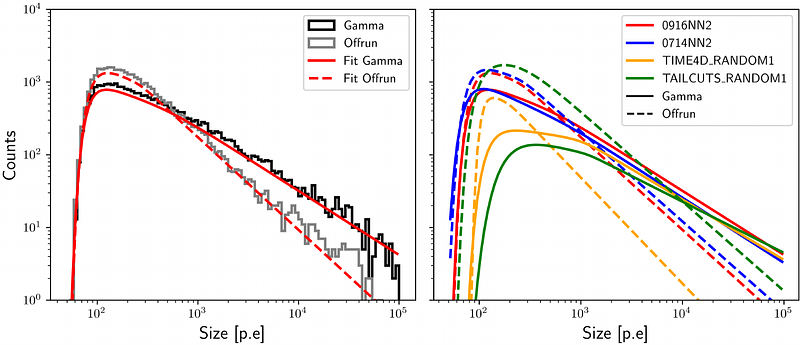A novel approach of optimizing the image cleaning performance of Imaging Atmospheric Cherenkov Telescopes: Application to a time-based cleaning for H.E.S.S

A novel approach of optimizing the image cleaning performance of Imaging Atmospheric Cherenkov Telescopes: Application to a time-based cleaning for H.E.S.S
Jelena Ćelić, Rodrigo Guedes Lang, Simon Steinmassl, Jim Hinton, Stefan Funk
AbstractThis study introduces a time-based cleaning method for H.E.S.S. using CT5 in monoscopic mode and presents an optimization workflow for image-cleaning algorithms to enhance telescope sensitivity while minimizing systematic biases. We evaluate three methods - tail-cut cleaning and two flavours of time-based cleaning TIME3D and TIME4D - and find best-cut configurations for two cases: optimal overall sensitivity and minimal energy threshold. TIME3D achieves a $\sim 15\%$ improvement with regard to the standard tail-cut cleaning for $E < 300$ GeV, with a $\sim 200\%$ improvement for the first energy bin (36.5 GeV < E < 64.9 GeV), providing a more stable performance across a wider energy range by preserving more signal. TIME4D achieves a $\sim 20\%$ improvement at low energies due to superior NSB noise suppression, allowing for an enhanced capability of detecting sources at the lowest energies. We demonstrate that using first-order estimations of the performance of a cleaning, such as image size retaining or NSB pixel reduction, cannot provide a full picture of the expected result in the final sensitivity. Beyond expanding the effective area at low energies, sensitivity improvement requires precise event reconstruction, including improved energy and directional accuracy. Enhanced gamma-hadron separation and optimized pre-selection cuts further boost sensitivity. The proposed pipeline fully explores this, providing a fair and robust comparison between different cleaning methods. The method is general and can be applied to other IACT systems like VERITAS, MAGIC. By advancing data-driven image cleaning, this work lays the groundwork for detecting faint astrophysical sources and deepening our understanding of high-energy cosmic phenomena.